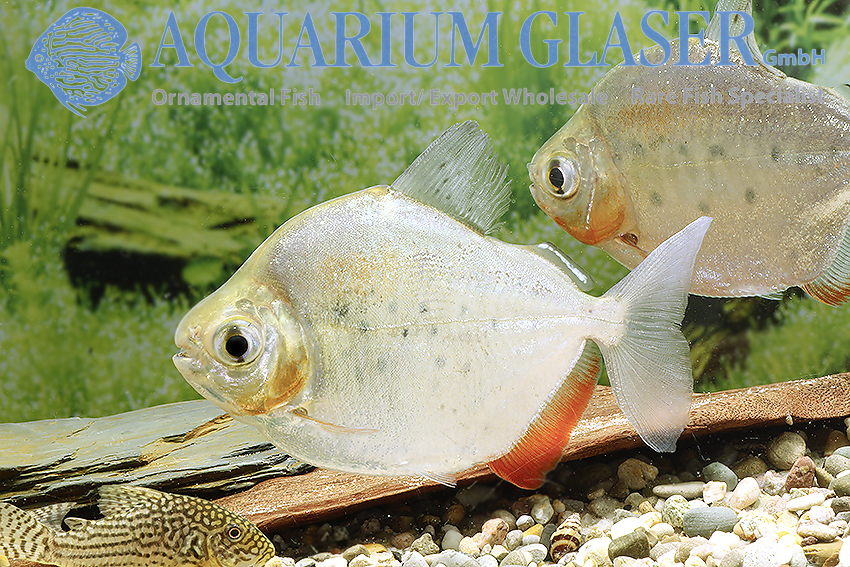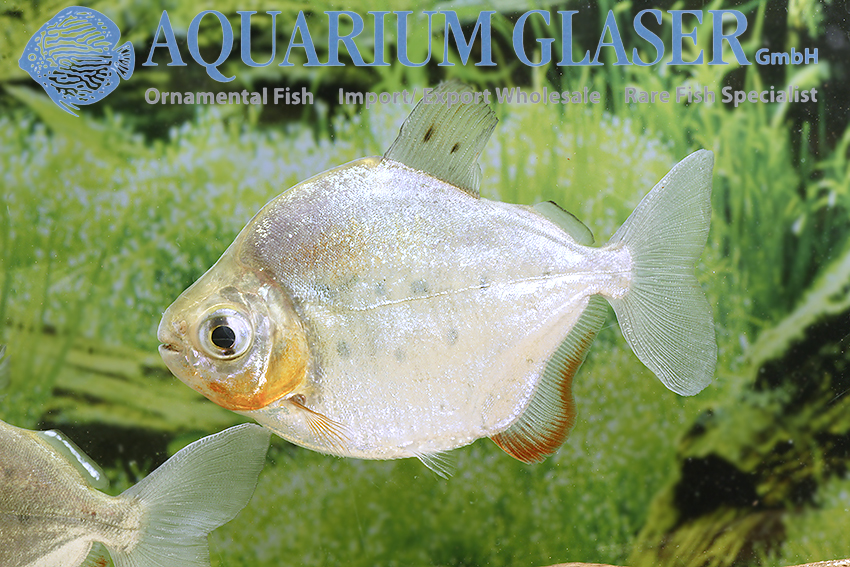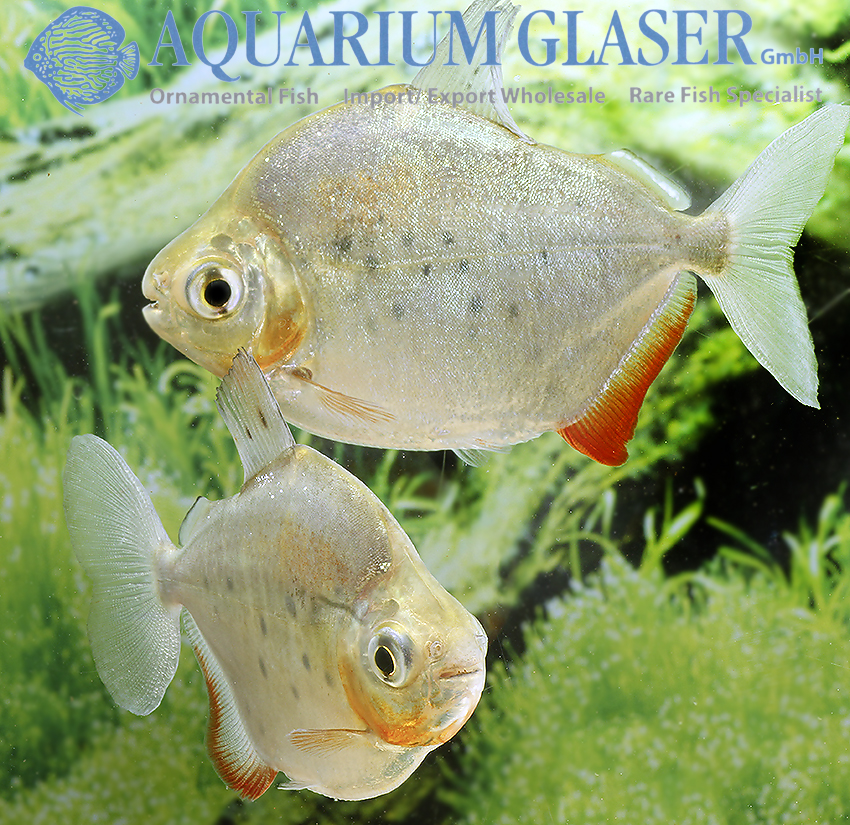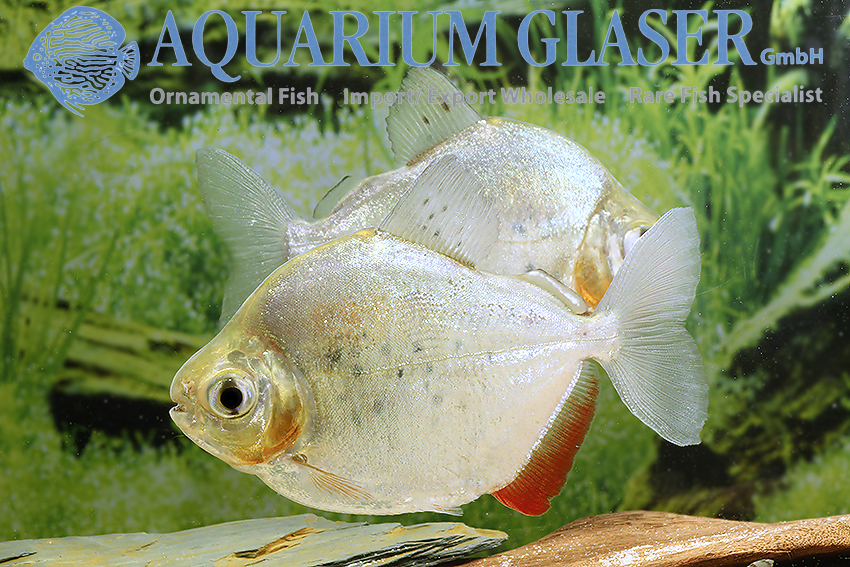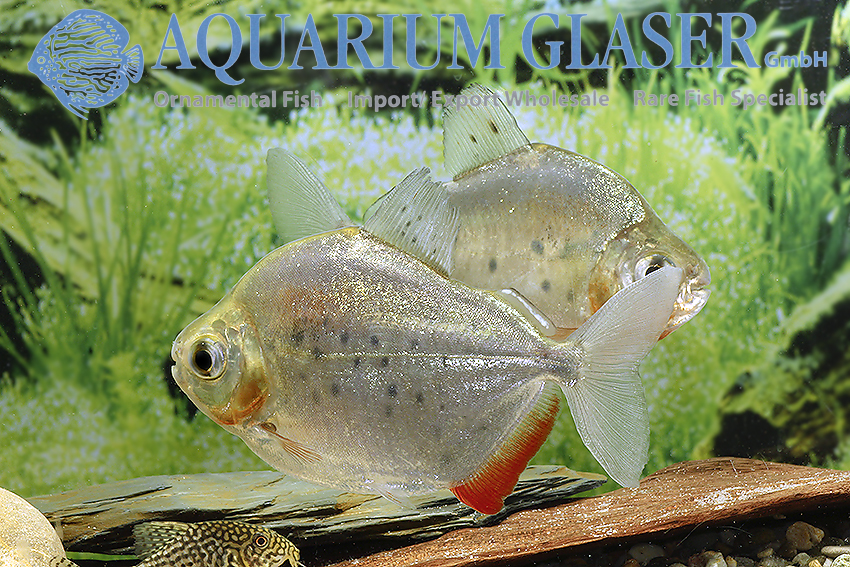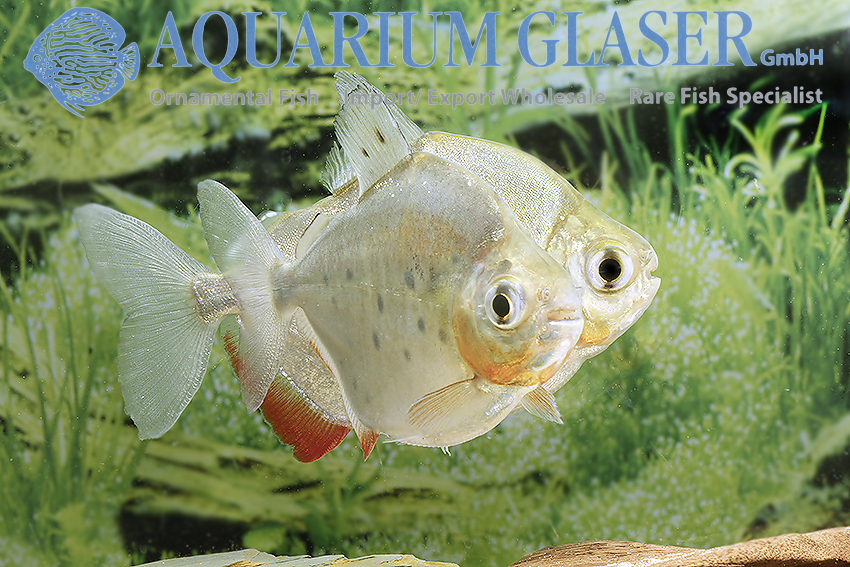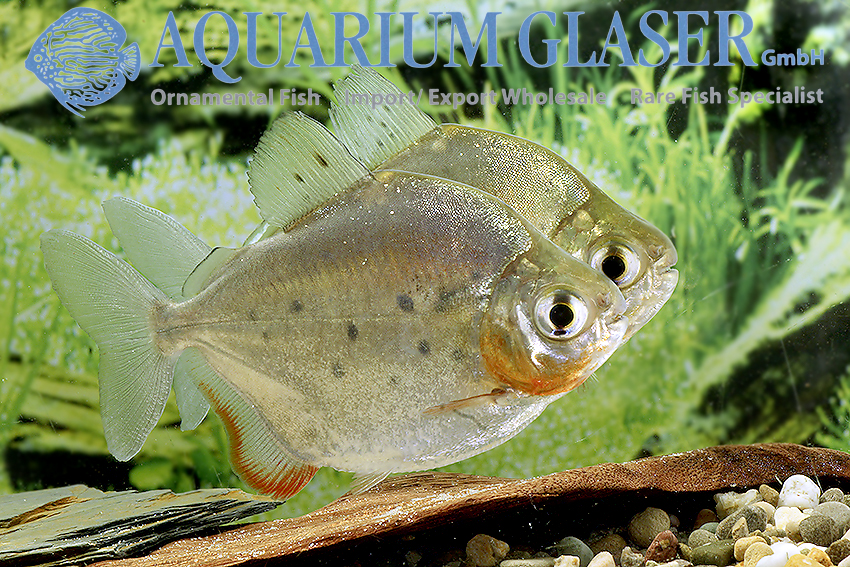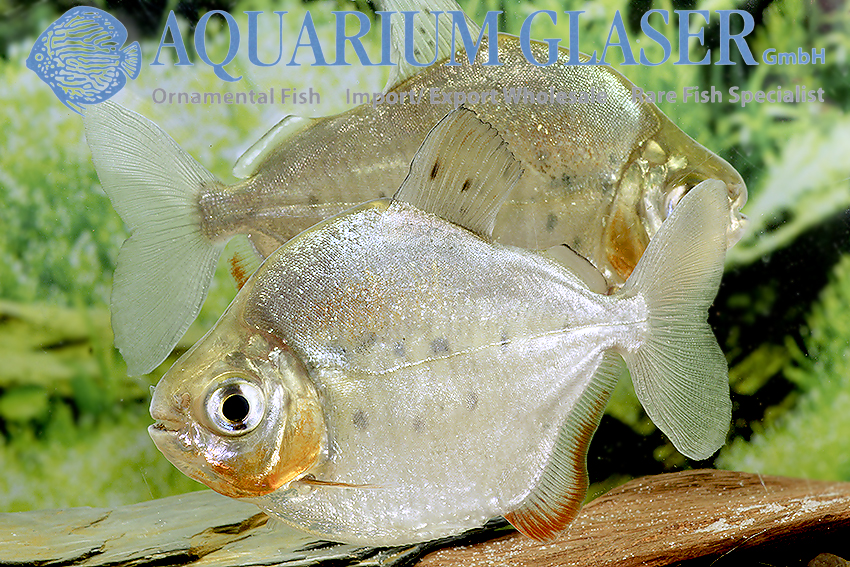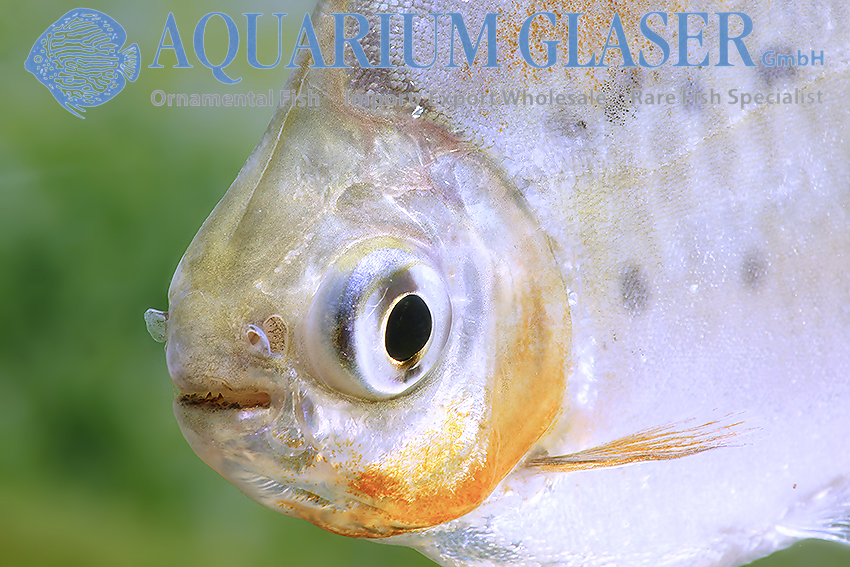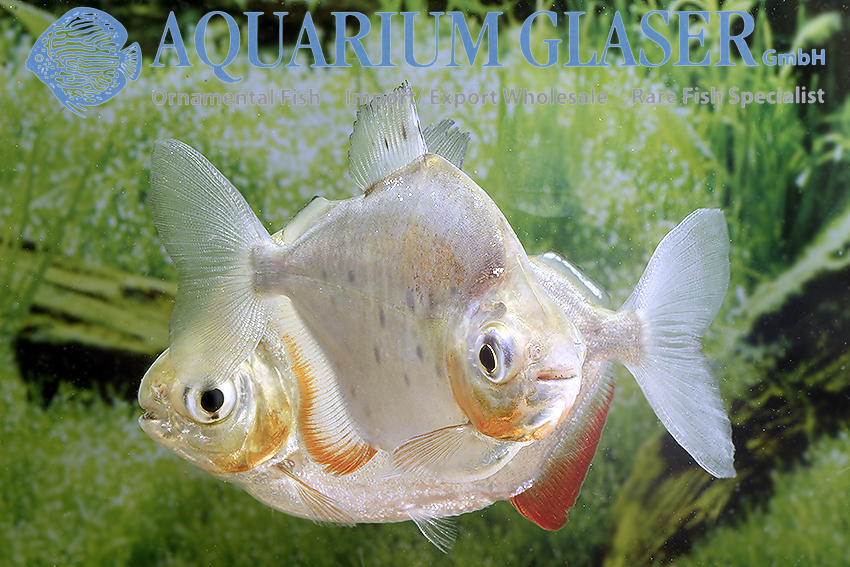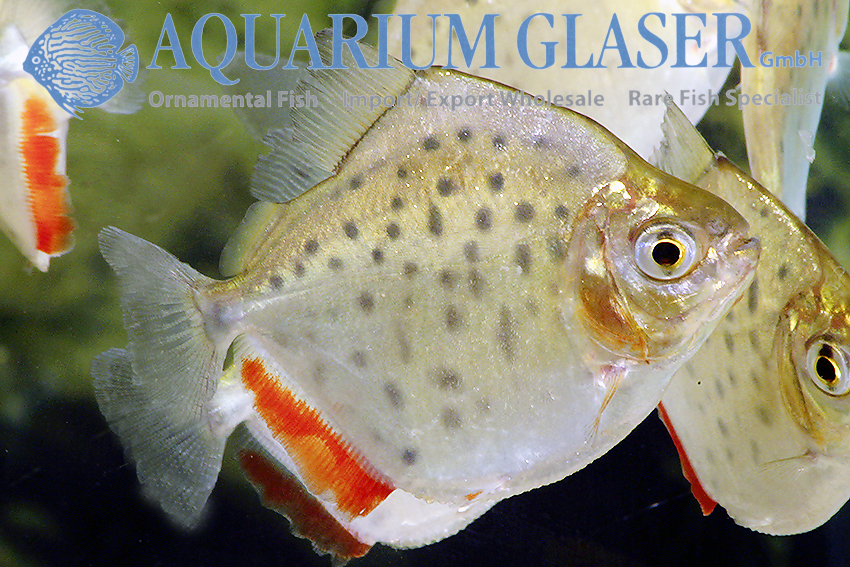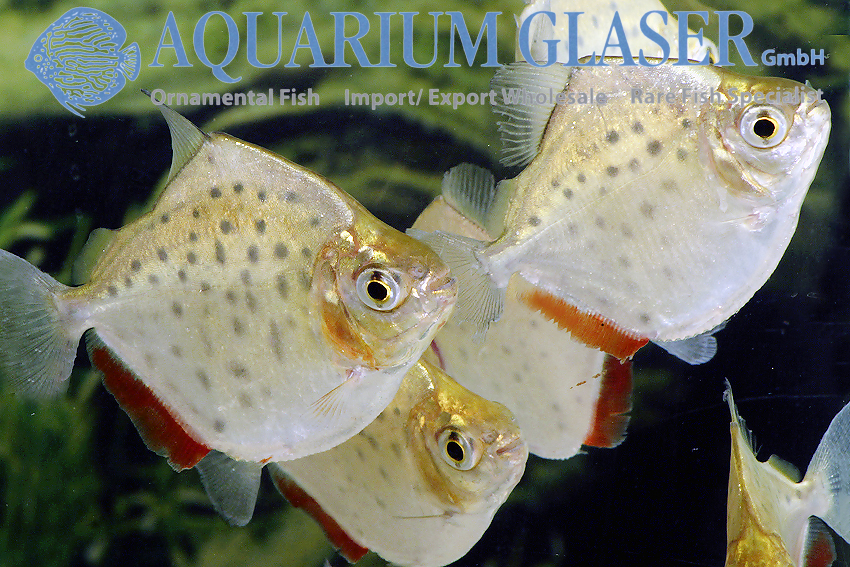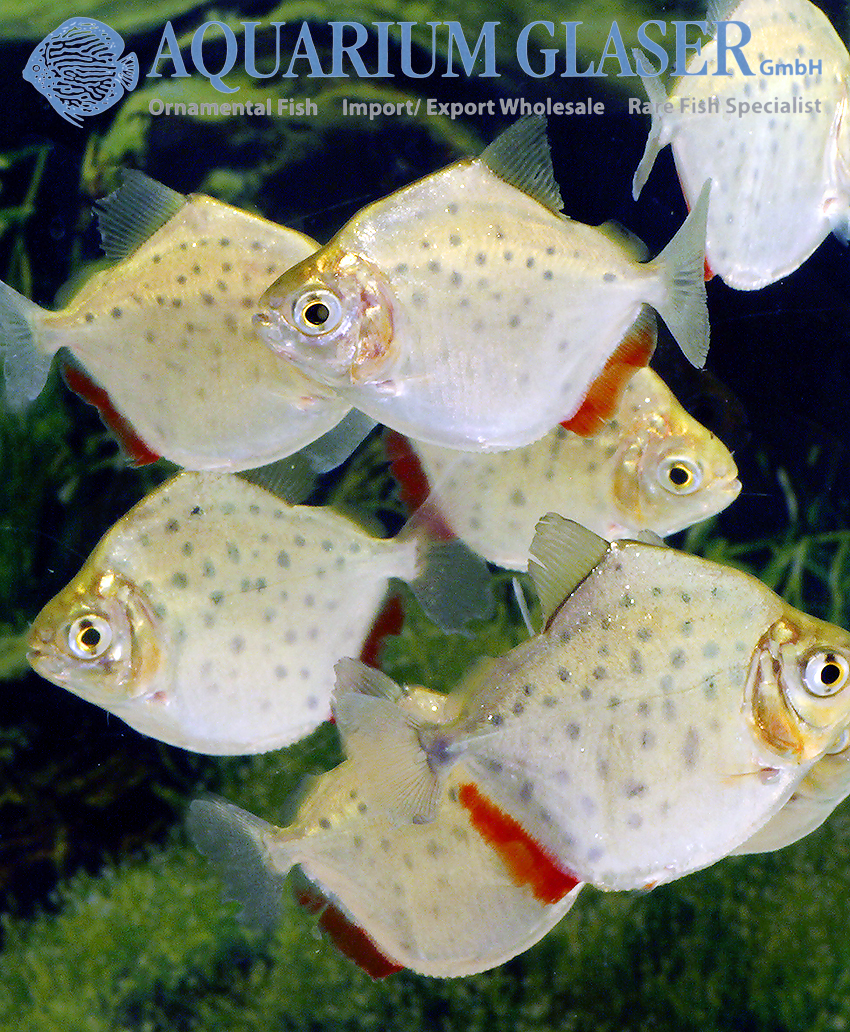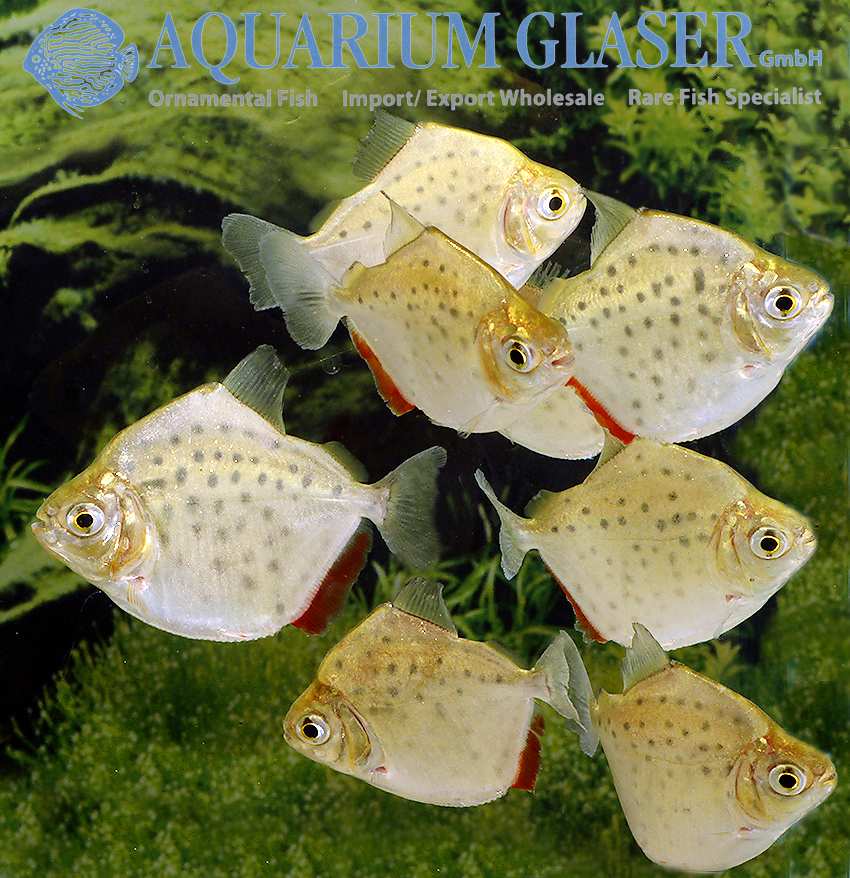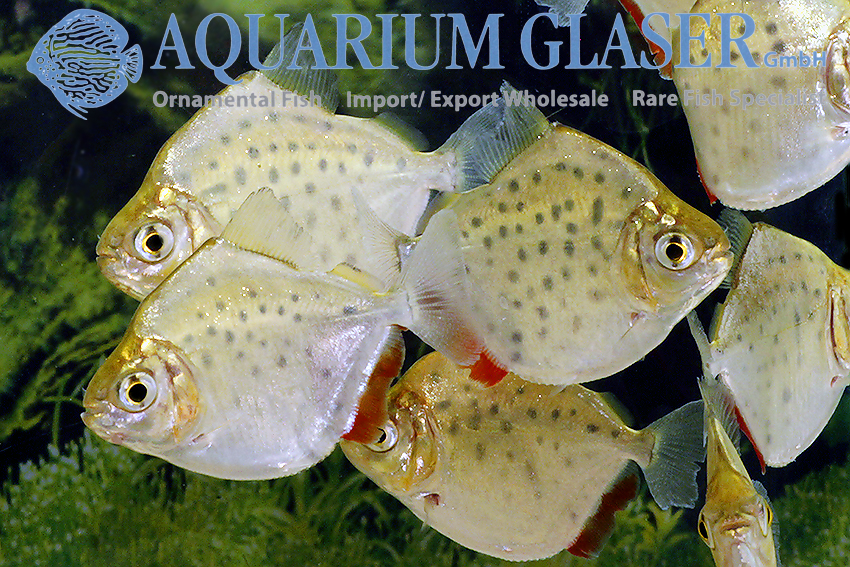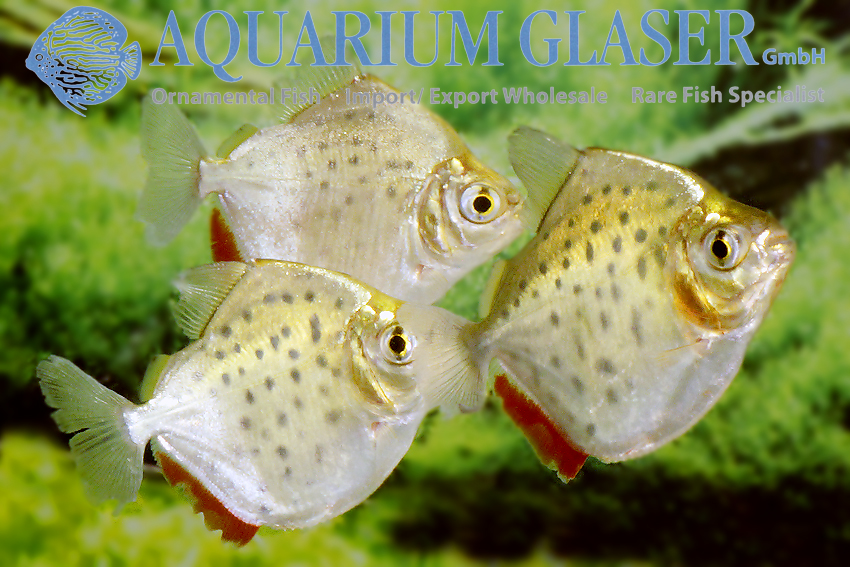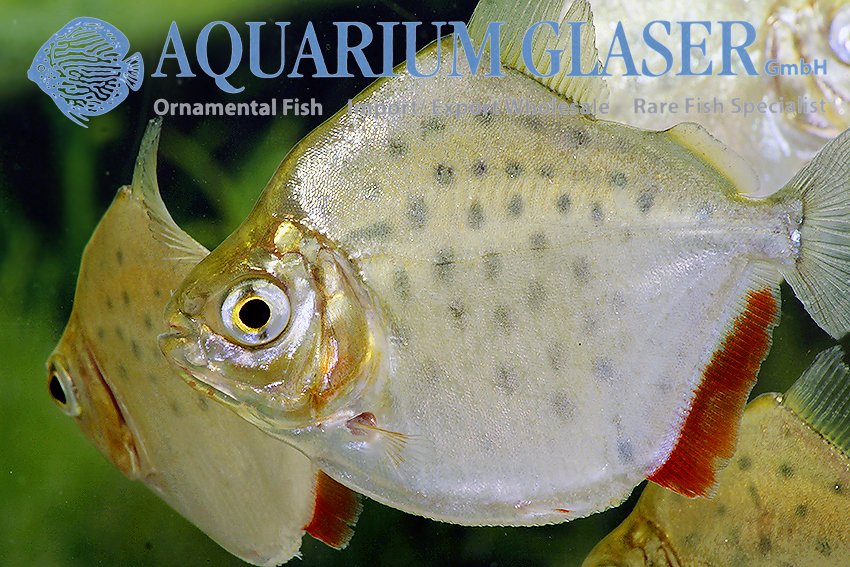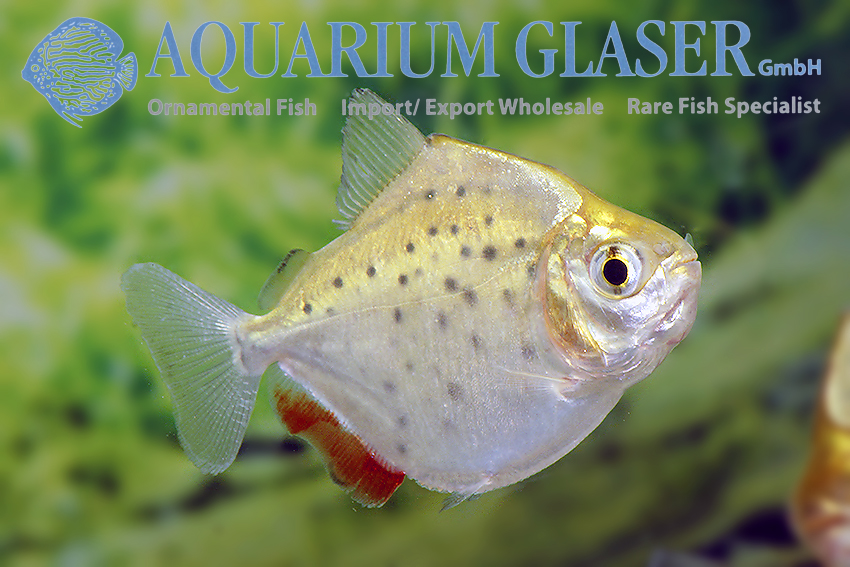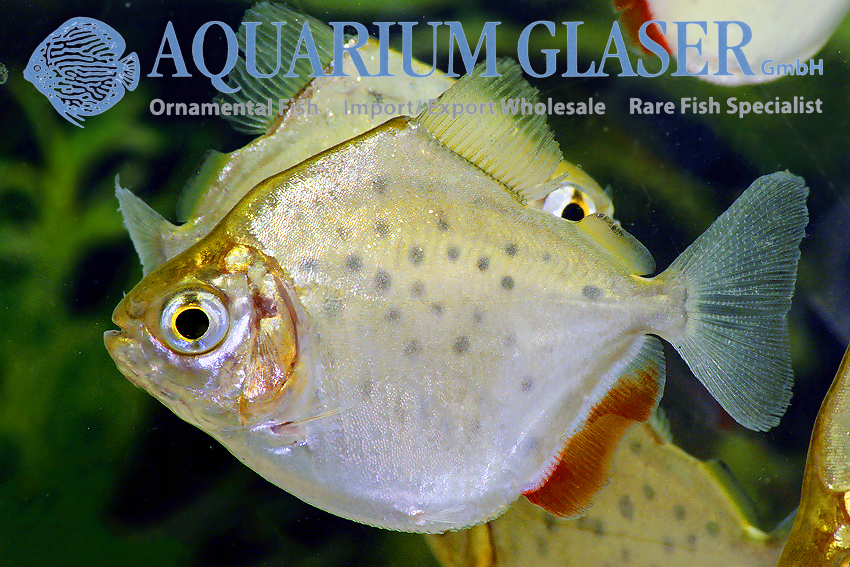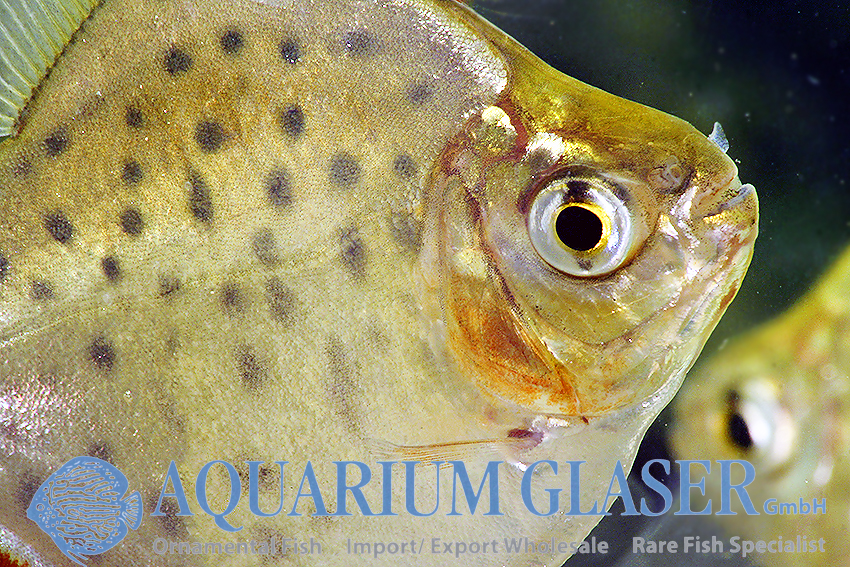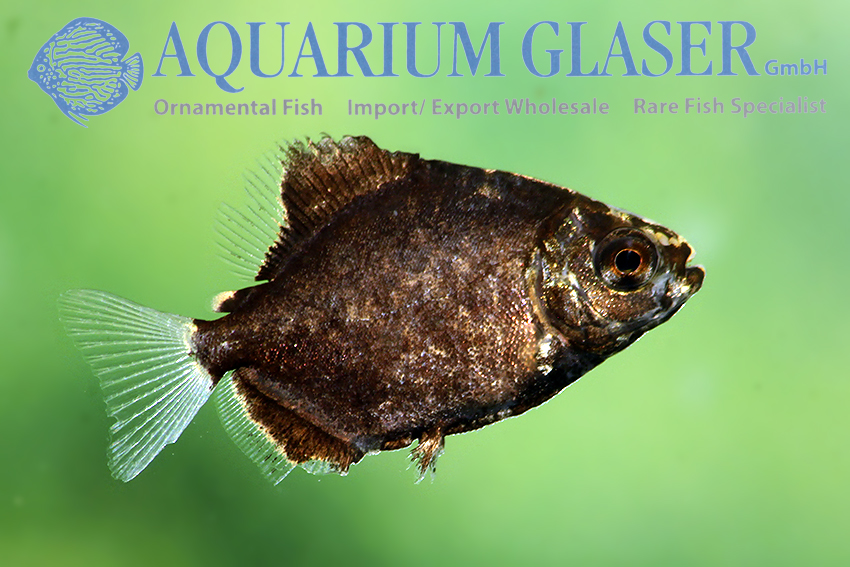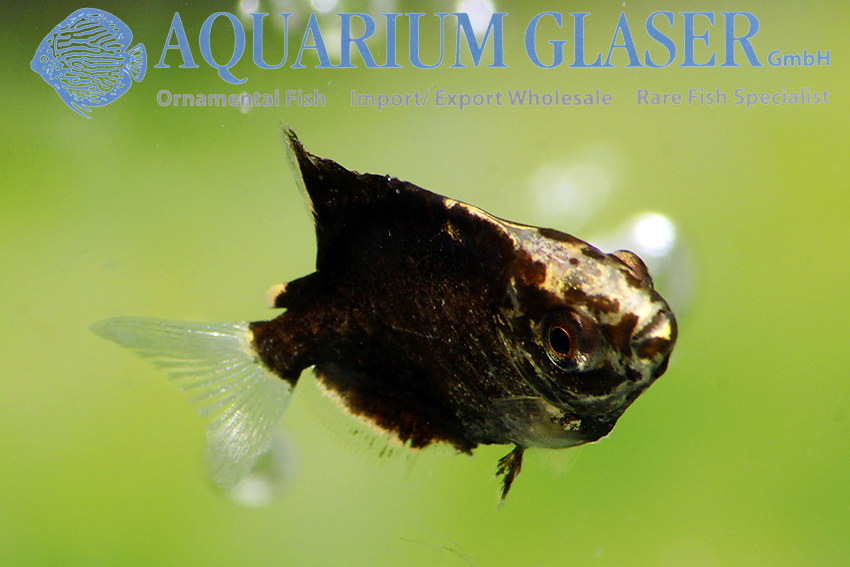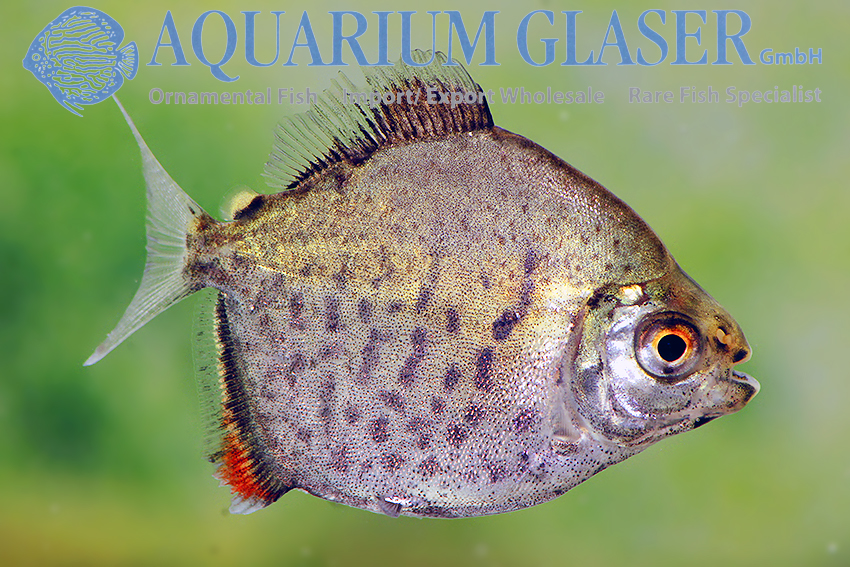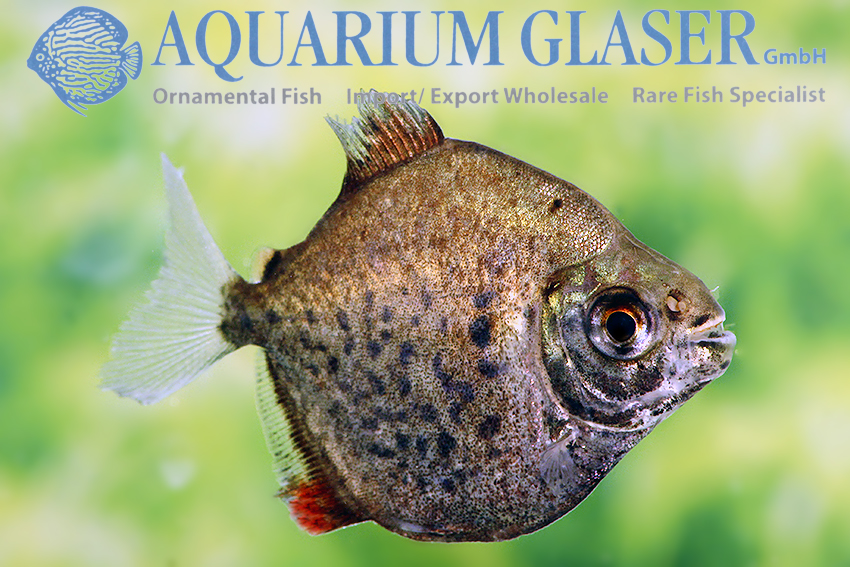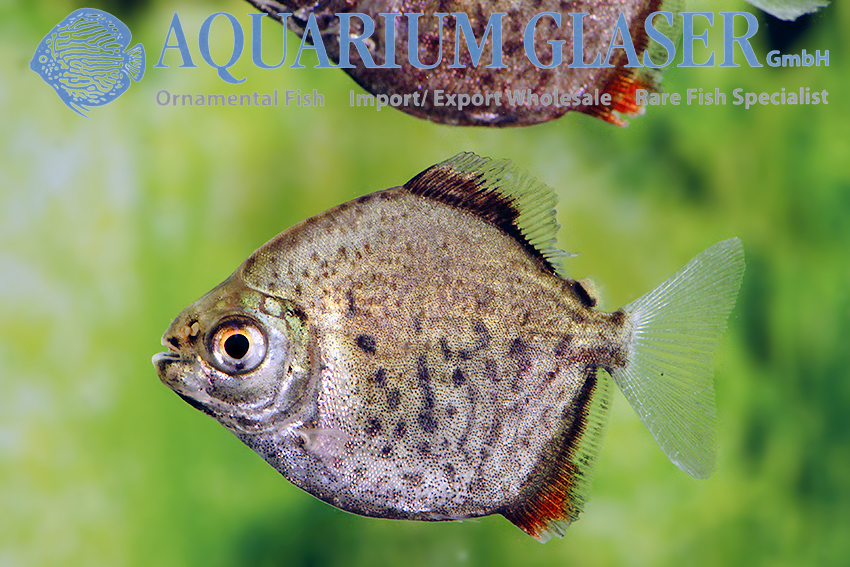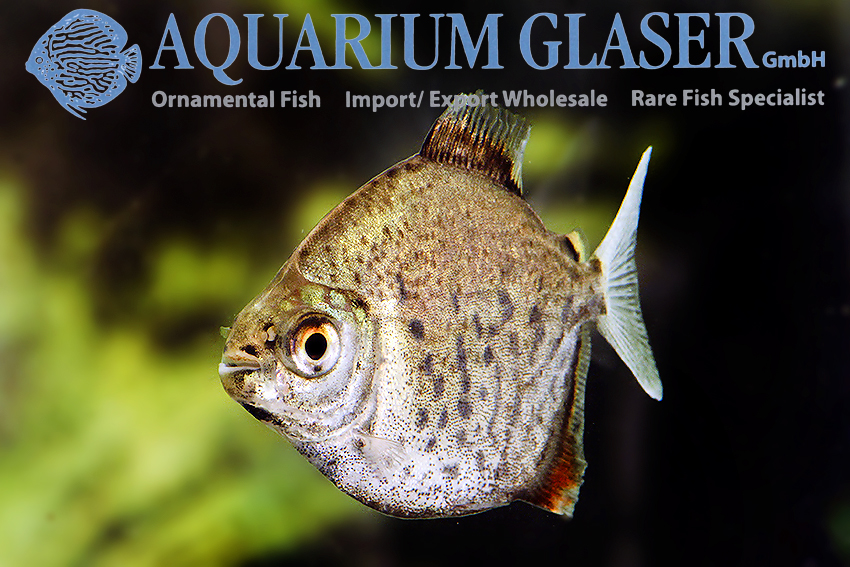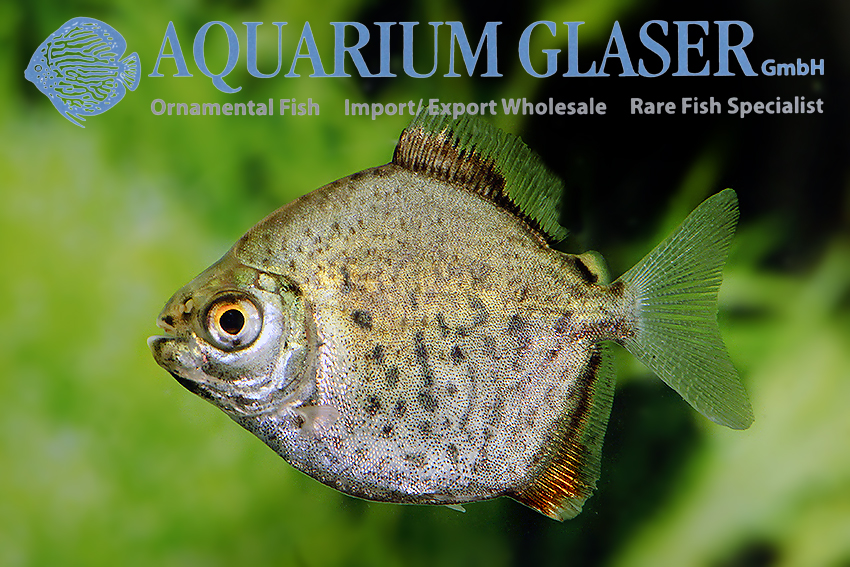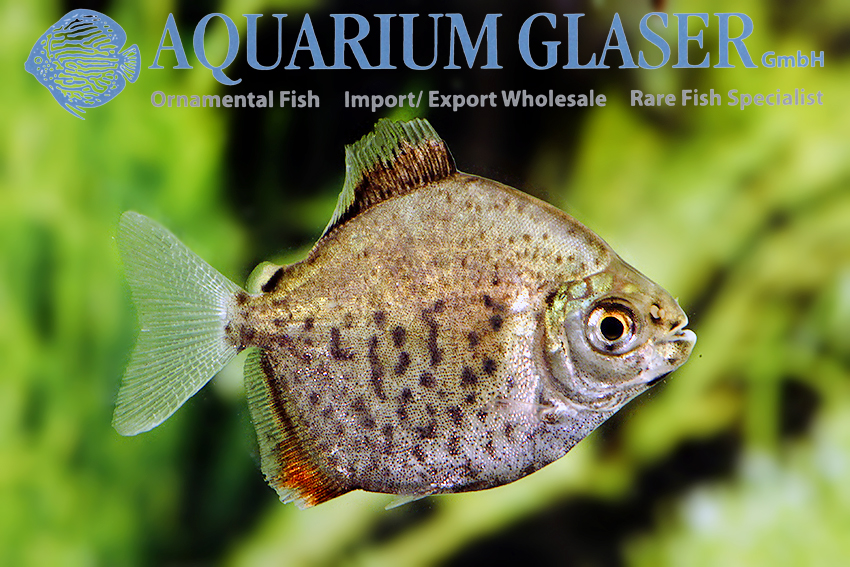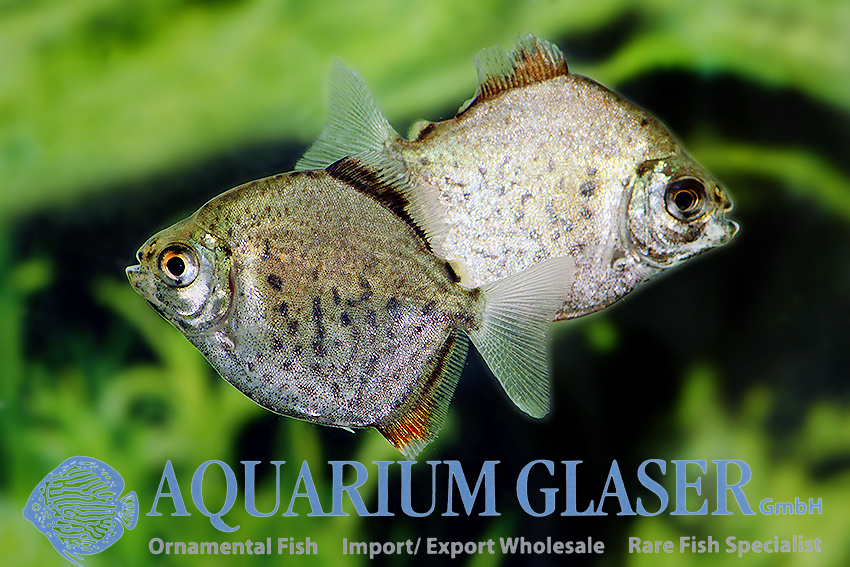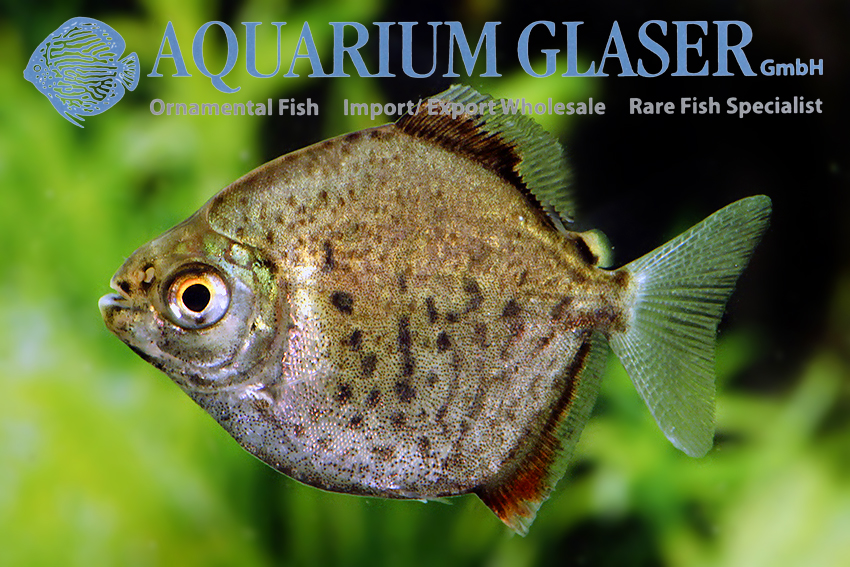Silver Dollars, which are the piranha relatives that eat mainly vegetable food, usually grow quite large, most species grow to over 20 cm, some to 40-60 cm long. The smallest known species is Metynnis lippincottianus, of which we can offer sexually mature specimens. They are currently 8-12 cm long, more than 15 cm total length is not to be expected for this species.
Males and females of sexually mature animals can be easily distinguished by the shape and colouring of the anal fin. Metynnis species are free spawners without brood care.
M. lippincottianus differs from the similar, larger species M. maculatus by its more elongated body, M. maculatus is therefore more highbacked. M. lippincottianus is widespread in South America and occurs in Bolivia, Brazil, Ecuador, Colombia and French Guyana.
For our customers: the animals have code 267906 on our stocklist. Please note that we only supply the wholesale trade.
Text & photos: Frank Schäfer





